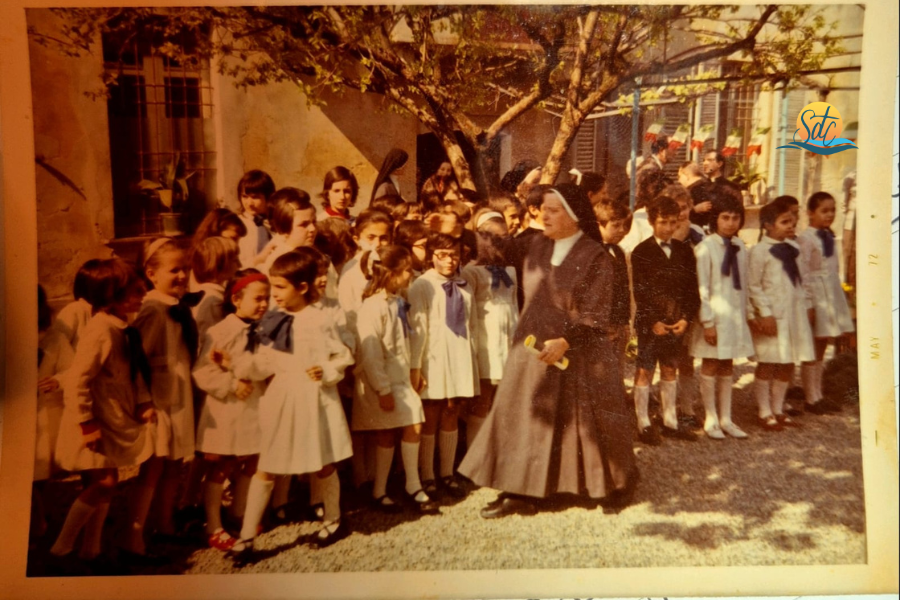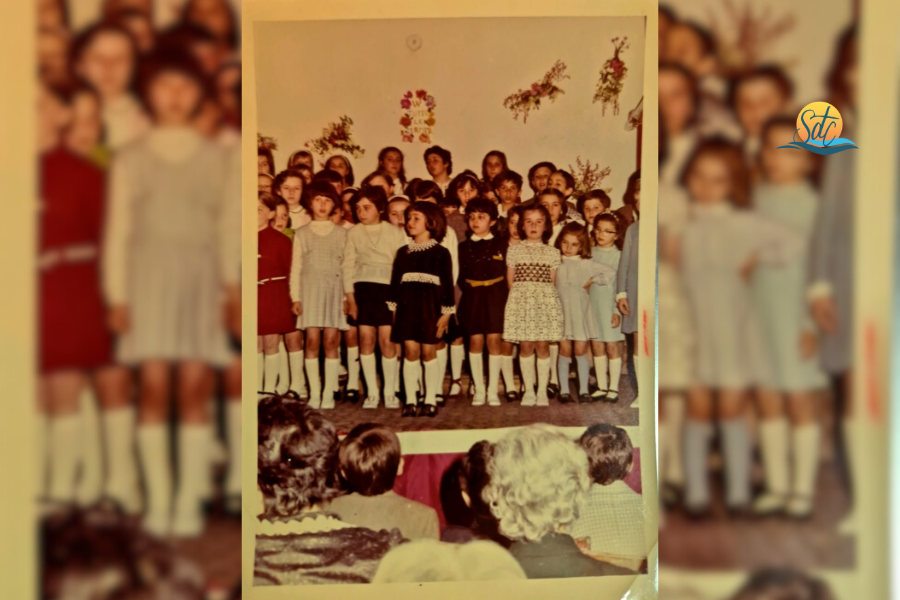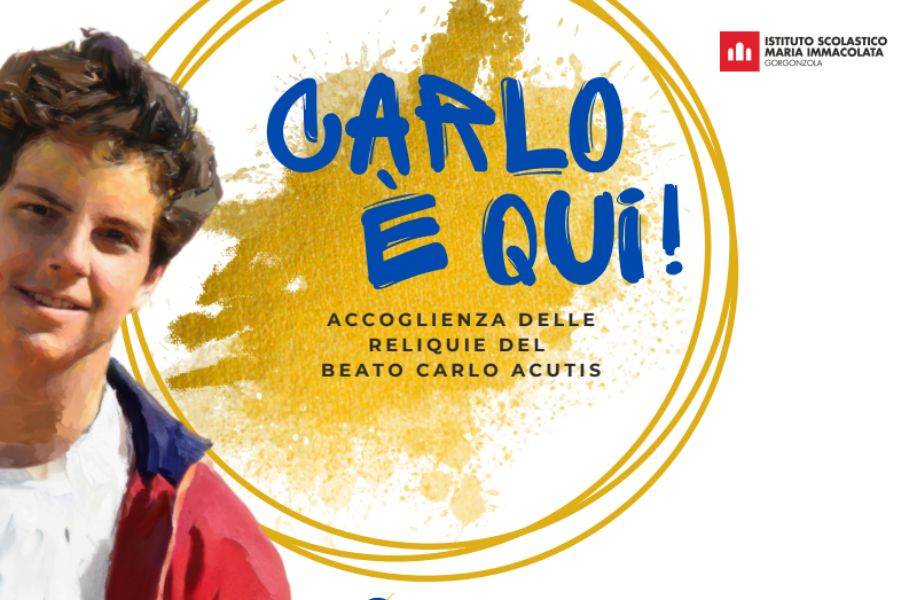‘Where did you go to primary school? To the Sisters or to the state school?’ – ‘The Sisters!’ I would answer my friends, and I would do so with pride.
We would meet ‘the state school ones’ on occasion, for example at the Festa degli Alberi (Tree Festival): we were very composed, with our white aprons and blue bows, not a uniform but an ornament, with a song ready and the teacher (Suor Concetta, but she reminded us on every occasion that we had to call her ‘Signora Maestra’) who would pose us to recite a poem that she had almost always composed herself.

At the Grattarola school, there were only a few of us girls from Solero in the class, but with us there were the pupils from the ‘collegino’, a place where girls who could not stay at home with their families were housed, to whom we dedicated our strength and energy. Today the correct term would be ’ inclusion’, at the time it seemed to me to be just friendship, and maybe a little solidarity.
The time during the school year was divided between the “heavy subjects” in the morning because we were more awake, and the “light” ones in the afternoon: in fact the timetable was really strange and I always wondered if there was a pedagogical reason for it. In the morning we were at school from 9 to 12 and in the afternoon from 14 to 16, at home on Thursdays and Saturdays only in the morning; for children who lived far away there was a canteen service, but even we who lived nearby ran home for lunch and then returned as soon as possible because after lunch, in summer, we would go for a walk in the countryside, in winter we would stay in the common rooms and often Don Claudio Moschini, then assistant priest, would come to play and we would prepare the shows for the holidays.
The seasons were marked by celebrations, with songs and small tasks, with poems recited with grand gestures, with the costumes of the Three Wise Men and the garlands for Mother’s Day, and it was during one of those celebrations that I became passionate about Latin: the teacher had written a poem in Latin for me to dedicate to my father and my curiosity and passion for grammar did the rest.
I also remember a few bad moments: once, while playing in the playground, I got dirt on my white smock and the teacher gave me a punishment, then along came Sister Anna Claudia, the Sister with the smile and the sweet voice, who made me go back to class, convincing Sister Concetta that I would always be careful; another time I argued with the teacher about transport in Venice, and since I was already very determined at the time, she, perhaps to silence me (was I also a bit petulant?), cut me off; at that point I was so offended and humiliated that I ran away! I ran away… I lived 50 metres from the school but when I got home my mum was worried, she was in tears. All’s well that ends well, because Sister Augusta’s intervention reconciled my disturbed soul.

But I also remember the summers, when together with the older girls, we would find ourselves sewing, embroidering, singing and preparing skits… personally I was more inclined towards this second part of the activities, I never understood the passion that my companions had for the half stitch.
I live in the same house, after 50 years, and looking back I can still see the lime trees from my balcony and I can still hear the chatter and laughter, and smell the scent of spring, and that of pencils and notebooks, and I still think with affection and gratitude of the dear Sisters of Saint Giovanna Antida who left their mark on my journey of faith and my life.
Maria Grazia Penna – Student of Sister Maria Concetta Scarampi
from the 1971/72 school year for 5 years

The school was named after the Marchioness Grattorola, who after the death of her husband Giulio Antonio in 1798, became a charitable and extremely virtuous woman. Unable to go out and visit the poor because of her illness, she left the village of Solero, in the province of Alessandria, in Piedmont, the fief of her ancestors, an annual income of 3,000 lire, to be used to help the sick at home and to pay for a teacher to educate the girls, thus establishing the Grattarola Charitable Organisation. The fund of the charity was later increased by donations and private bequests, until it was definitively placed at the disposal of the Bishop of Alessandria.
A pharmacy for the poor and an educational institution for young girls were then opened. The Sisters of Charity, founded by St Giovanna Antida Thouret (1765-1826), were teachers of infants and worked in the pharmacy, dedicated to the same spirit in which the charity was founded: the education of young people and assistance to the poor. The school was officially opened in 1845, in the presence of the town’s authorities.
The ‘Opera Pia Grattarola’ primary school, officially recognised after the First World War, was attended over the years mainly by the girls of the town and supported by the proceeds of the pharmacy of the same name.






